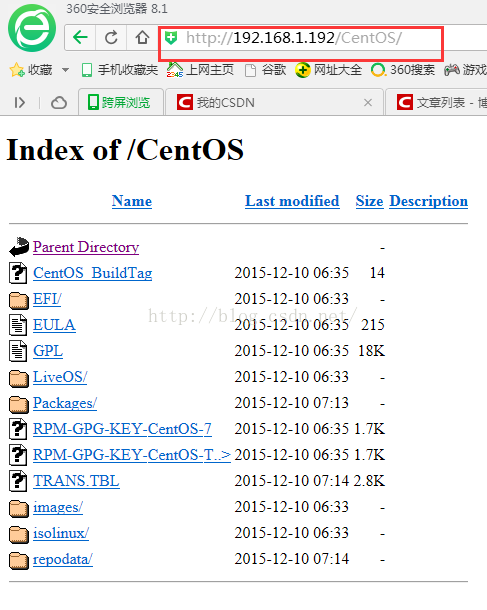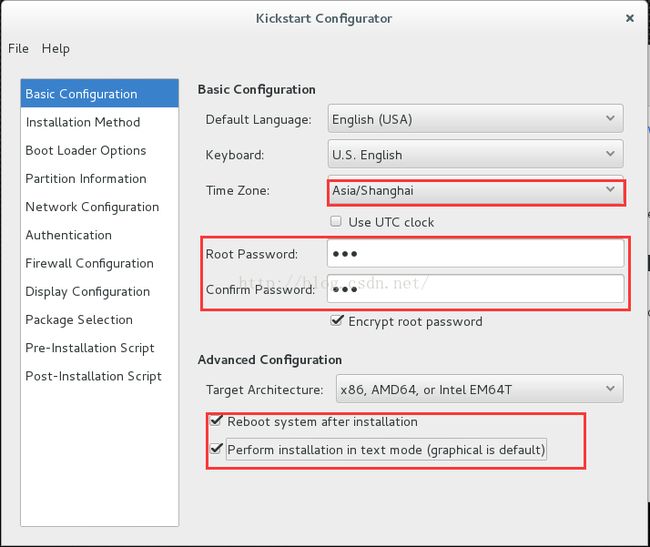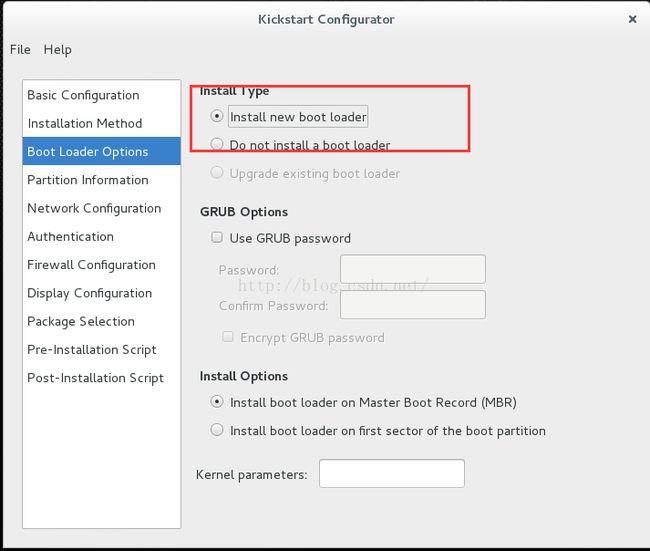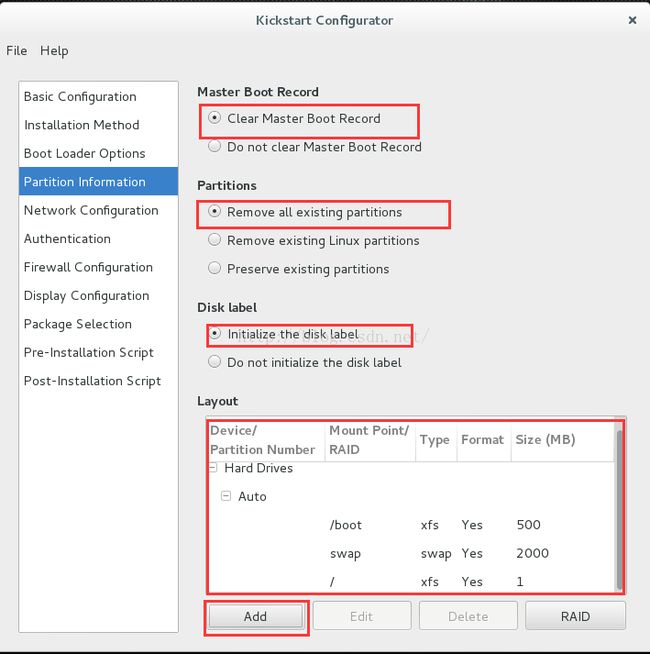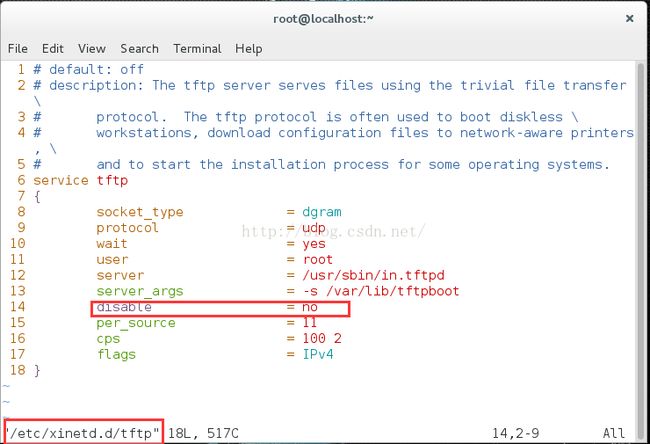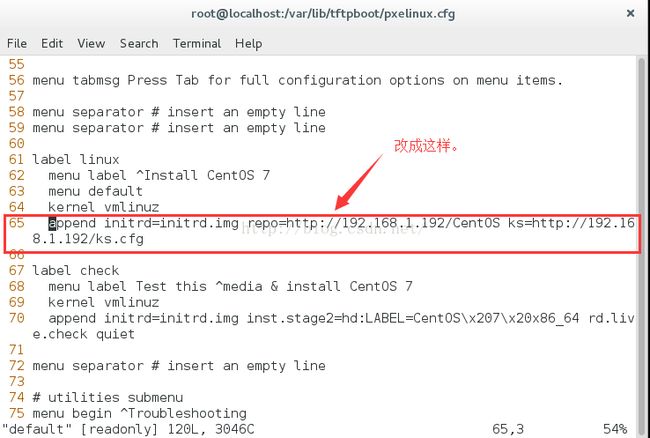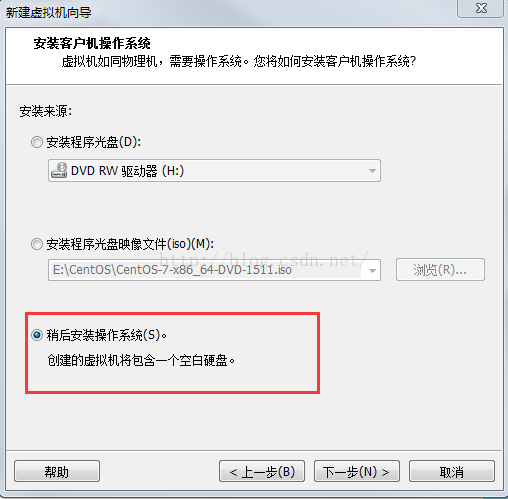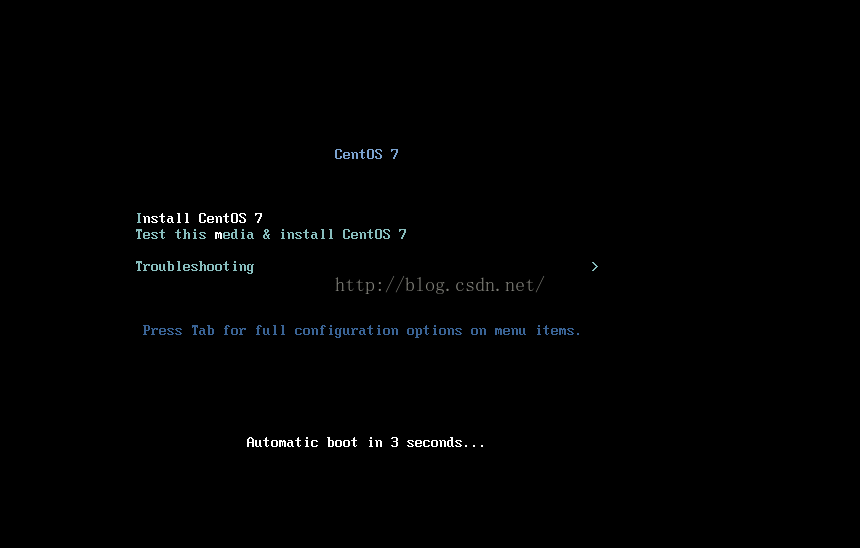CentOS7下的PXE无人值守系统安装
为了满足同时安装上百台linux,而且不需要人工干预。这就需要PXE来通过网线自动安装linux
1.搭建yum源来下载必要的工具,yum源的配置见点击打开链接。
2.下载syslinux,dhcp,http,tftp-server。
[root@localhost etc]# yum -y install syslinux dhcp httpd tftp-server
Loaded plugins: fastestmirror, langpacks
Loading mirror speeds from cached hostfile
Package syslinux-4.05-12.el7.x86_64 already installed and latest version
Package 12:dhcp-4.2.5-42.el7.centos.x86_64 already installed and latest version
Package httpd-2.4.6-40.el7.centos.x86_64 already installed and latest version
Package tftp-server-5.2-12.el7.x86_64 already installed and latest version
Nothing to do
因为我是安装好了,所以报告Nothing to do 。那没安装的就执行那个命令
yum -y install syslinux dhcp httpd tftp-server
3.下载自动安装kickstart工具命令
yum -y install system-config-kickstart
同样,我也安装过了,才报告Nothing to do
[root@localhost ~]# yum -y install system-config-kickstart
Loaded plugins: fastestmirror, langpacks
Loading mirror speeds from cached hostfile
Package system-config-kickstart-2.9.2-4.el7.noarch already installed and latest version
Nothing to do
进入/var/www/html ,并创建一个目录CentOS用来挂载镜像
[root@localhost ~]# cd /var/www/html/
[root@localhost html]# ls
CentOS ks.cfg
[root@localhost html]# mount /dev/sr0 /var/www/html/CentOS
命令是 mkdir /var/www/html/CentOS 。然后再挂载(sr0是镜像,也可以写成其他的镜像之类的)。
再执行以下命令
[root@localhost html]# systemctl start httpd
[root@localhost html]# systemctl stop firewalld
5.用system-config-kickstart工具来生成一个自动的安装的配置文件
运行命令,并弹出一个图形界面
[root@localhost ~]# system-config-kickstart
第二个:Installation Method(这个填自己IP,HTTP Directory就填自己那个光盘镜像的目录)
第三个。Boot Loader Options
第四个。Partition Information
分区自己操作吧。点下面那个Add(那个1代表占用剩余磁盘)
第五个 NetWork Configuration
第六个(我没说的选项不用改)
第七个
保存下来,(因为CentOS7下这个软件的问题。还需要在vim编辑一下ks.cfg这个文件)
打开这个ks.cfg这个文件。在最后面加上
%packages
@base
%end
保存后。使用如下命令检查一下是否有语法错误
[root@localhost ~]# ksvalidator ks.cfg
[root@localhost ~]# 将该文件移到/var/www/html/ks.cfg
[root@localhost html]# ls
CentOS ks.cfg
[root@localhost html]# pwd
/var/www/html
[root@localhost html]# systemctl restart httpd
6.配置tftp(这个文件的位置在左下角)
再执行命令
[root@localhost ~]# systemctl start xinetd
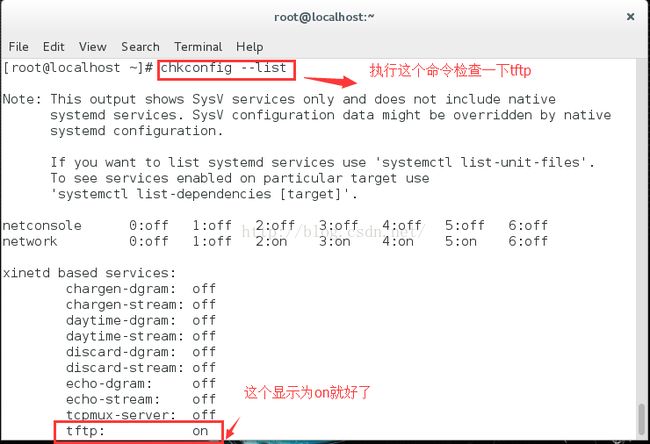
7.将必要文件放到tftpboot内
[root@localhost ~]# cp /usr/share/syslinux/pxelinux.0 /var/lib/tftpboot/
[root@localhost ~]# mkdir /var/lib/tftpboot/pxelinux.cfg
[root@localhost CentOS]# cp /var/www/html/CentOS/isolinux/* /var/lib/tftpboot/
[root@localhost CentOS]# cp /var/lib/tftpboot/isolinux.cfg /var/lib/tftpboot/pxelinux.cfg/default
8.配置dhcp服务器
在/etc/dhcp下编辑 dhcpd.conf 文件
这个文件下写如下内容
option domain-name "example.org";
option domain-name-servers 114.114.114.114;
default-lease-time 6000;
max-lease-time 72000;
log-facility local7;
subnet 192.168.1.0 netmask 255.255.255.0 {
range 192.168.1.10 192.168.1.200;
option routers 192.168.1.1;
filename "pxelinux.0";
next-server 192.168.1.192;
}
注意:
好了。最后一步!!修改文件。这个文件是/var/lib/tftpboot/pxelinux.cfg/default
(还有就是将63行 加上menu default ,删去69行的menu default)
最后。再重启一下服务吧!!!!!(关闭防火墙)
[root@localhost pxelinux.cfg]# systemctl restart httpd
[root@localhost pxelinux.cfg]# systemctl restart xinetd
[root@localhost pxelinux.cfg]# systemctl restart dhcpd
[root@localhost pxelinux.cfg]# systemctl stop firewalld
来。用vmware试试效果
1.创建新的虚拟机
2.选择稍后安装操作系统
3.以后的都随意点。根据自己喜好
4.在这停一下
完成后。全自动安装虚拟机,无需手动!!!
